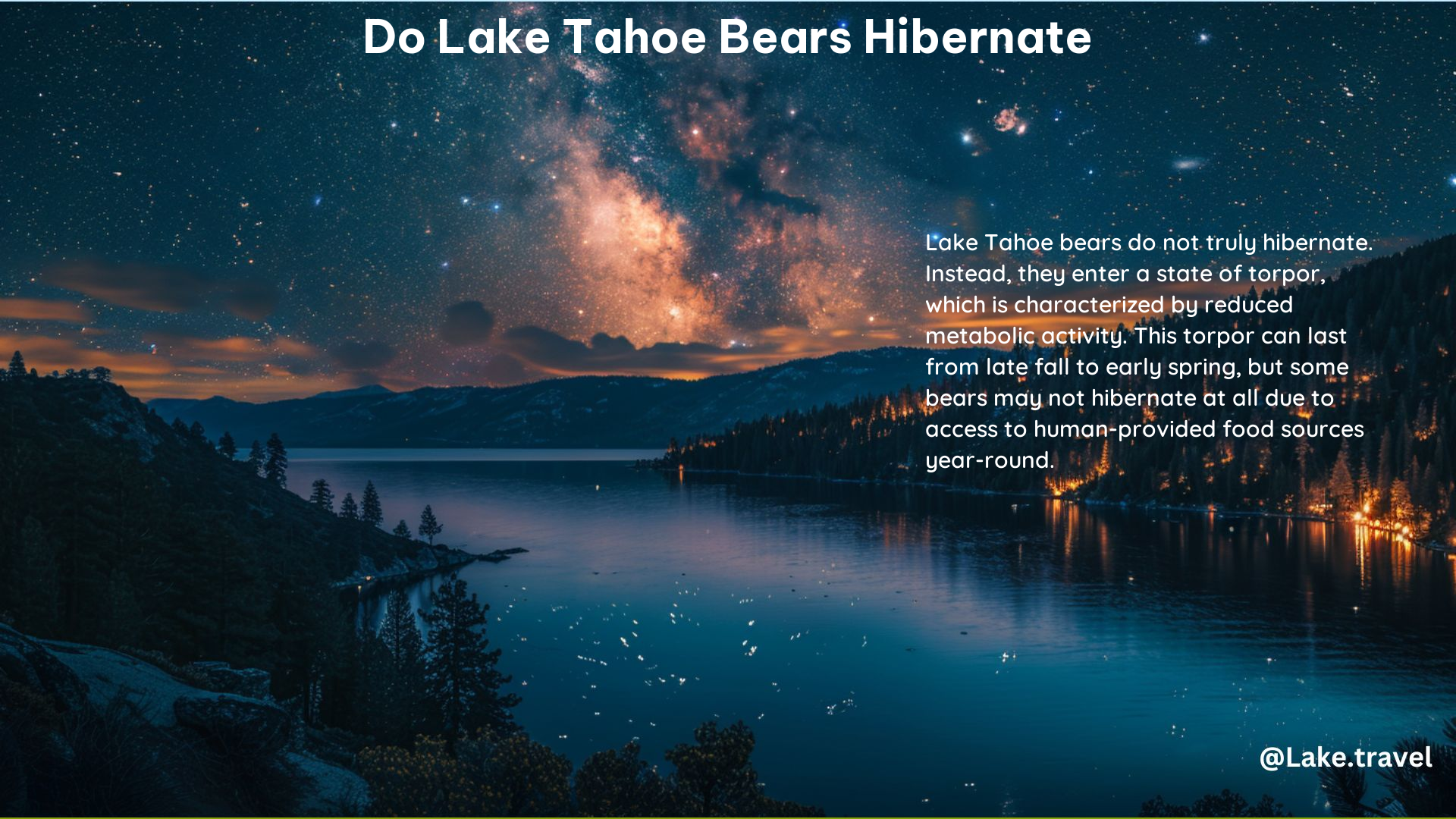Lake Tahoe bears do not truly hibernate in the classical sense. While they do slow down and den up during the winter, some bears continue to access human food sources and remain active year-round. This is due to the availability of unnatural food sources provided by humans, which disrupts their natural hibernation patterns.
Hibernation Patterns
Before entering their dens, bears in the Lake Tahoe area typically go through a period of hyperphagia, where they eat nearly continuously to consume as many calories as possible. This usually occurs in mid-November, after which the bears begin to enter their dens and hibernate.
During hibernation, bears can doze for many months, relying on their warm pelts, decreased tendency to lose body heat, and large body mass to conserve energy. However, the bears in Lake Tahoe experience a state of reduced metabolic activity, known as torpor, rather than true hibernation.
Factors Influencing Hibernation

The availability of human-provided foods, such as improperly stored garbage and pet food, can significantly impact the hibernation patterns of Lake Tahoe bears. Access to these unnatural food sources can cause bears to enter hibernation later, arouse during hibernation, or even forgo hibernation altogether.
This is because the bears do not need to conserve energy when food is readily available, disrupting their natural instinct to hibernate. As a result, some bears in the Lake Tahoe area remain active throughout the year, leading to increased human-bear conflicts.
Consequences of Disrupted Hibernation
The disruption of natural hibernation patterns can have severe consequences for the bears in the Lake Tahoe area. When bears do not hibernate or hibernate for shorter periods, they are more likely to come into contact with humans, leading to property damage and public safety concerns.
Additionally, the disruption of hibernation patterns can result in high mortality rates for the bears. Without the ability to conserve energy during the winter months, the bears may not have the resources to survive the leaner times.
Coexisting with Bears
To minimize conflicts and ensure the well-being of both humans and bears in the Lake Tahoe area, it is essential to secure food and garbage sources. This can be achieved by using bear-resistant garbage cans and containers, as well as educating the public about the importance of securing these attractants.
Furthermore, educating the community about the consequences of disrupting bear hibernation patterns and the importance of coexisting with these animals is crucial. By working together, residents and visitors can help maintain the natural balance of the Lake Tahoe ecosystem and ensure the long-term survival of the region’s bear population.
References:
– Keep Tahoe Bears Wild. (n.d.). Learn More. Retrieved from https://www.tahoebears.org/learn-more
– SFGATE. (2022, March 9). Lake Tahoe’s bears aren’t hibernating, worrying experts. Retrieved from https://www.sfgate.com/renotahoe/article/Lake-Tahoe-bears-not-hibernating-16986842.php
– Tahoe Daily Tribune. (2022, December 18). With food available, many bears at Tahoe forgo hibernation. Retrieved from https://www.tahoedailytribune.com/news/with-food-available-many-bears-at-tahoe-forgo-hibernation/
– California Department of Fish and Wildlife. (2021, January 8). Bear, Naked Truth | Do Tahoe’s Bears Actually Hibernate? Retrieved from https://wildlife.ca.gov/Conservation/Mammals/Black-Bear/Blog/winter-hibernation
